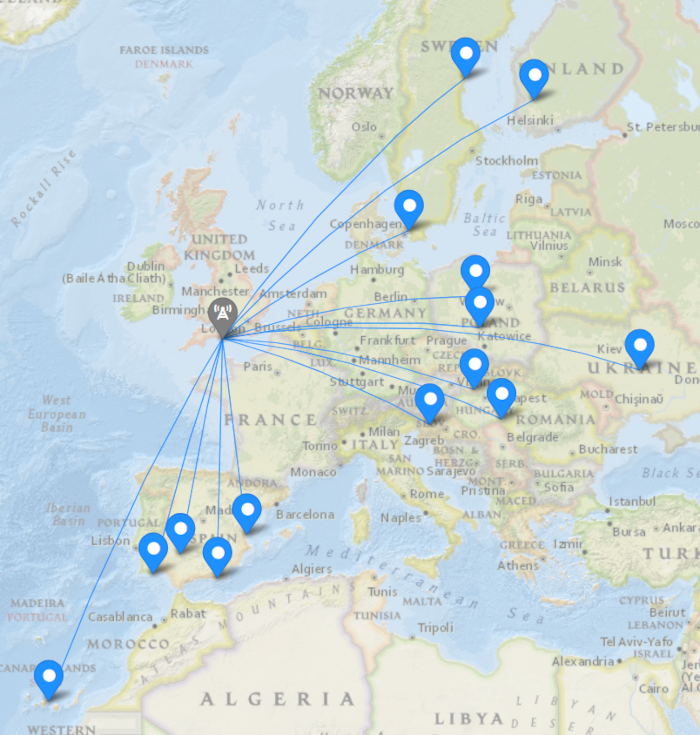GB-2522 River Frome Site of Special Scientific Interest had stood unactivated for around nine months, and had been on my to-do list for almost that long as well. The SSSI stretches all the way from Dorchester to Wareham, but encompasses only a few tiny scraps of riverbank—mostly, it’s just the river itself.
 Map of the River Frome SSSI
Map of the River Frome SSSI
Whilst the POTA rules do allow river parks to be activated anywhere up to 30m away from the actual watercourse, even then suitable spaces of public land are hard to come by on the Frome. I checked out a variety of potential locations using DorsetExplorer, and a spot next to the water works near East Burton stood out—but when I got there I found the gate padlocked, and I didn’t fancy an argument about the finer points of the CRoW act with an angry farmer.
Disheartened, I let this activation sit on the list untouched, until around May time I picked it up again and started thinking about bridges. While a bridge wouldn’t offer any soft ground for pegs and stakes, some of the bridges across the river are plenty big enough to host a portable radio station. Woolbridge stood out as the obvious choice, but it’s frequented by pedestrians, so instead I set my sights on Holmebridge, around three miles to the east.
Woolbridge may have all the history, claiming to be haunted by the real-life woman that inspired Thomas Hardy’s Tess of the D’Urbervilles, but Holmebridge still has some history of its own. While the modern bridge was built in the 1960s, there was a bridge here dating back to medieval times; it was also the site of a battle in 1644 during the English Civil War, where Parliamentary forces from Wareham defeated a unit of Royalists supporting the Bankes family who held nearby Corfe Castle.
It’s also long and wide enough to support plenty of radio equipment, falls within the SSSI itself, and with almost zero pedestrian footfall, it’s an ideal place for an hour or so of amateur radio.
 Our antenna setup on the bridge
Our antenna setup on the bridge
While we did end up sitting pretty close to our own ground radials, today’s activation was limited to 25 Watts anyway, because for the first time I was doing a joint activation with friends and Foundation licencees Stu M7UTS and Joe M7JSE.
We parked in the lay-by and set up a selection of the equipment we had each brought along, starting with the G90 transceiver and some thin coax, eventually switching to the FT-891 and thicker coax to wring the last few drops of power that we could to complete the activation. Both parts were using the JPC-12 vertical antenna on a heavy duty tripod. Joe M7JSE also brought along a QMX transceiver and demonstrated making FT8 QSOs at 5W using the iFTX app on a phone, first with an EFHW pulled into a nearby tree, and then with the JPC-12.
All in all, the activation was a qualified success. As our first attempt at a multi-operator activation, I was disappointed by the number of contacts who made one QSO with us, then span the dial immediately without waiting for our second and third operator. Since I was making the CQ calls, that inevitably meant I reached the 10 QSO target for activating before they did, and they had some disappointing attempted QSOs with an empty frequency. However, we all made it in the end, with each of us having at least 11 in the log.
 Map of today’s contacts
Map of today’s contacts
Many thanks to my all our contacts this afternoon, especially those that stuck around to contact all three of us, and of course to Stu and Joe for coming out and making our first multi-operator activation a success. See you on the air next time!
Comments